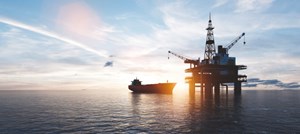Report: Offshore oil and gas risk management improved, but still lacking since Deepwater Horizon disaster
(WO) ― Most of the offshore oil and gas industry operating in the Gulf of Mexico has shown considerable improvement in systemic risk management, which is now approaching a middle stage of maturity across most risk elements, according to a new report from the National Academies of Sciences, Engineering, and Medicine. The report, which assesses both industry and regulatory progress against the reforms that were recommended following the Deepwater Horizon disaster in 2010, also states that progress has been uneven, and critical gaps remain in comprehensively addressing the management of systemic risk offshore.
Many key reforms recommended in the wake of the 2010 blowout and spill have been adopted, collectively representing real improvement, the report says. These include the creation of the U.S. Department of the Interior’s Bureau of Safety and Environmental Enforcement (BSEE) with a singular focus on safety, and mandated safety and environmental management systems (SEMS).
Additional positive changes include industry-funded deepwater well capping capability, heightened industry standards and regulatory requirements for well control and production safety systems, improved industry data collection and sharing of some near-miss and other safety indicators through SafeOCS, and the industry’s creation and funding of the Center for Offshore Safety.
Empirical safety performance measures have been developed or improved, but these are not yet advanced enough to allow for quantitative assessments of the industry’s overall risk profile. The committee that wrote the report reached its assessment of the industry’s risk management maturity level through qualitative indicators and expert judgment.
As the committee defined it, systemic risk — the overall risk of catastrophic failure associated with the entire system of individual offshore platforms — is managed through five interrelated areas, namely, a culture that supports safety, human resources, human-systems integration, hardware and design, and regulatory environment.
“The government has made important regulatory reforms, and the offshore oil and gas industry has in turn taken significant strides in accounting for and reducing systemic risk, none of which should be overlooked,” said committee chair Richard Sears, adjunct professor for the department of energy science and engineering at Stanford University. “But systemic risk embodies everything, from C-suite priorities and the culture of a team on a rig, to hardware and physical inspections ― the safety and integrity of that system is only as strong as its weakest link.”
Investigations following the 2010 well blowout and spill pointed to significant management and organizational failures, as well as insufficient regulation and regulatory oversight, rather than failures of technology. The report says that some of the management and communication breakdowns that led to the disaster have not been fully addressed.
For example, industry guidance in the management of safety controls that depend on human judgment and execution, and industry standards for education, training, and demonstrations of competence for personnel in safety-critical positions are all needed.
There is little evidence that the industry is working collectively to enhance its safety culture, the report says. The Center for Offshore Safety provides an effective venue for doing so through best practices and safety information sharing, learning, and guidance, but not all companies are participating.
Although the offshore industry does have operators and contractors with deep organizational culture commitments to design and operations that minimize systemic risk, a visible, industrywide, industry-led commitment to a culture that supports safety is still lacking.
The report states that technology development for offshore oil and gas has been exceptional. However, relatively little progress has occurred in applying real-time monitoring, automation, and operational data to specifically enhance safety decision-making.
The report notes other areas of concern, including the breakdown in communication and oversight that can occur at the operator-contractor interface, as it did on Deepwater Horizon, remains a vulnerability for an industry that relies on contractors for more than 80% of the work carried out on offshore rigs, including the most safety-critical drilling operations.
In addition, operators are required to submit corrective action plans to BSEE in response to SEMS audit deficiencies, but these plans are not required to examine and address the root causes of the identified deficiencies.
Current standards and regulations, such as Recommended Practice 75 and BSEE’s SEMS, lack specific guidance on management of contingent barriers ― those that require active human interaction or intervention ― and use of human factors standards.
The study was funded by the Gulf Research Program, a science-based program founded in 2013 as part of legal settlements with the companies involved in the 2010 Deepwater Horizon disaster. It seeks to enhance offshore energy system safety and protect human health and the environment by catalyzing advances in science, practice, and capacity to generate long-term benefits for the Gulf of Mexico region and the nation.



